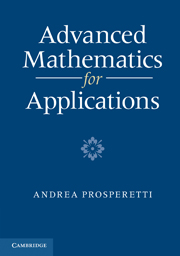1 - The Classical Field Equations
Published online by Cambridge University Press: 05 June 2012
Summary
It is a remarkable aspect of the “unreasonable effectiveness of mathematics in the natural sciences” (Wigner 1960) that a handful of equations are sufficient to describe mathematically a vast number of physically disparate phenomena, at least at some level of approximation. Key reasons are the isotropy and uniformity of space-time (at least locally), the attendant conservation laws, and the useful range of applicability of linear approximations to constitutive relations.
After a very much abbreviated survey of the principal properties of vector fields, we present a summary of these fundamental equations and associated boundary conditions, and then describe several physical contexts in which they arise. The initial chapters of a book on any specific discipline give a far better derivation of the governing equations for that discipline than space constraints permit here. Our purpose is, firstly, to remind the reader of the meaning accorded to the various symbols in any specific application and of the physics that they describe and, secondly, to show the similarity among different phenomena.
The final section of this chapter is a very simple-minded description of the method of eigenfunction expansion systematically used in many of the applications treated in this book. The starting point is an analogy with vectors and matrices in finite-dimensional spaces and the approach is purposely very elementary; a “real” theory is to be found in Part III of the book.
- Type
- Chapter
- Information
- Advanced Mathematics for Applications , pp. 3 - 26Publisher: Cambridge University PressPrint publication year: 2011

